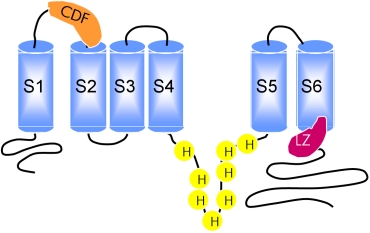Heavy metal transporters
Many transition metals are essential for all forms of life – for example as cofactors in enzymes or in stabilising transcription factors.
Examples include Zn, Fe, Cu, Mn and Co, However, when present at high concentrations these metals become toxic. Some other metals (Cd, Hg, Pb) have no known biological function and are highly toxic. Plants therefore face the dilemma of obtaining sufficient metals from the soil for nutritional needs and yet ensuring that amounts accumulated are not toxic.
The extent to which plants accumulate heavy metals has knock-on effects for human health and nutrition.
Ultimately, we derive metals essential for our metabolism from plants. It is conservatively estimated that around 30% of the world’s population suffers from Zn or Fe deficiency and deficiencies in these two metals alone are thought to account for over 1.5 million deaths worldwide (nearly all in High Mortality Developing Countries – WHO).
The endosperm of many cereals has a low Zn and Fe content, so it will be highly beneficial to breed plants with the capacity to accumulate more of these metals.
The Cation Diffusion Facilitator (CDF) family of membrane transporters is distributed in all three kingdoms of life – Archeae, Bacteria and Eukaryota – where they are involved in the transport of a variety of transition metals.

In Arabidopsis, the CDF family is represented by 12 MTP genes. MTP1 is vacuolar in location and responsible for sequestering Zn, thereby conferring Zn tolerance. MTP1 might be considered as a candidate for biofortification of cereals with Zn.

The Sanders-Miller lab have shown that MTP11 is a Mn transporter that confers tolerance to high concentrations of Mn. Unlike MTP1, MTP11 localises to a vesicular membranes that are likely to be Golgi. It seems likely that MTP11 confers Mn tolerance by loading Mn into the secretory system.

Magnesium Homeostasis in Plants
Magnesium is an essential ion for all cells of all known organisms, since it is the counter-ion chelating the ATP molecule, the energy currency of cells. The ion also plays a role in stabilisation of structures of ribosomes and DNA oligomers, and in photosynthesis as the central ion of Chlorophyll.
Although it is vital, not much is known about the way in which plants sense the levels of Magnesium present in the environment and regulate uptake and distribution of the ion, even though the levels are clearly regulated very tightly.
There is an urgent problem with Magnesium-nutrition in plants; studies have shown that the Mg2+-content of many of the major cereals has declined since the “Green Revolution”, and yields may be suffering because of it. In addition, it is estimated that about two thirds of the world’s population are not receiving the recommended daily intake of this ion, with possible health consequences.
This project therefore aims to identify components of the Magnesium regulatory network via a mutant screen and Genome-Wide Association Studies (GWAS), and to characterise components found functionally. We then plan to use Bioinformatics and mathematical modelling to elucidate the Mg network in plants and address the issues outlined.
Current work in the lab is looking at the use of these transporters in the biofortification of crop plants, as a means to improve grain micronutrient content.
